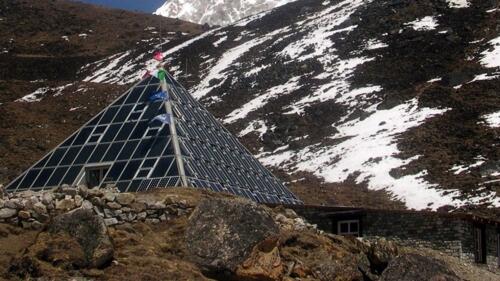Science
Two years after the scientists in Finland successfully made coffee in a laboratory, VTT Technical Research Center of Finland Ltd has released detailed information on the process. Published in the Journal of Agriculture and Food Chemistry, the scientific paper describes the exact process the scientists used to produce coffee starting from the original coffee plant itself, and establishing cell cultures to alter its aroma in the roasting process, caffeine content, flavor analysis, and sensory profiling by a panel of tasters. While demand for coffee is rising, the production of coffee beans faces multiple sustainability challenges, concerning land and water use, laborers’ rights, and climate change. According to the Center for the Promotion of Imports, Europe, the highest consumer of coffee in the world, imported over 3,602 thousand tons (3.6 million tons) of green coffee in 2021, with an estimated average of 5 kg of coffee consumed per pe...
Glaciers in the Himalayas are melting rapidly, but a new report showed an astonishing phenomenon in the world’s tallest mountain range could be helping to slow the effects of the global climate crisis. When warming temperatures hit certain high-altitude ice masses, it sets off a surprising reaction that blows robust cold winds down the slopes, according to the study published December 4 in the journal Nature Geoscience. The warming climate creates a greater temperature gap between the surrounding air above Himalayan glaciers and the cooler air directly in contact with the ice masses’ surface, explained Francesca Pellicciotti, professor of glaciology at the Institute of Science and Technology Austria and lead author of the study. “This leads to an increase in turbulent heat exchange at the glacier’s surface and stronger cooling of the surface air mass,” she said in a news release. As the cool, dry surface air gets coole...
Dubai, United Arab Emirates—”The North Star of the COP28 Presidency is to keep 1.5°C within reach,” has been the frequent refrain of Sultan Ahmed Al Jaber, the COP28 president overseeing the current U.N. climate change negotiations in Dubai. Al Jaber is reflecting the oft-chanted activist slogan “Keep 1.5 Alive!” The idea is that humanity must reduce its emissions of globe-warming greenhouse gases from burning fossil fuels sufficiently to keep the planet from warming more than 1.5 degrees Celsius above the pre-industrial baseline (1850-1900). It is worth tracing the history of where the 1.5 C “North Star” originated and what the consequences of breaching it would likely be. The 1.5 C threshold was officially enshrined as a goal under the United Nations Framework Convention on Climate Change with the adoption of the Paris Climate Change Agreement in 2015. Article 2 in the Paris Agreement commits s...
Startling new insights into the catastrophic impact of one of the most devastating events in Earth’s history have been revealed by a team led by researchers with the USC Dornsife College of Letters, Arts and Sciences. More than deepening our understanding of the end-Triassic mass extinction, their findings offer critical lessons for today’s environmental challenges. About 200 million years ago, Earth experienced its fourth major mass extinction event. Triggered by a dramatic rise in greenhouse gases due to volcanic activity, the event led to rapid global warming and a significant shift in the planet’s biosphere, ending the Triassic period and launching the Jurassic. Many scientists now believe Earth is in the midst of another mass extinction, driven in large part by similar climate changes. Earth scientists at USC Dornsife took a unique approach to analyzing the impact of this extinction event on both ocean and land ecosystems, using a novel...
Several decades ago, when the concentration of carbon dioxide (CO2) in the atmosphere was well below 400 parts per million, climate scientists began warning of the negative consequences for Earth’s climate of burning fossil fuels. From those early warnings, a consensus emerged that carbon emissions would need to be lowered (and eventually zeroed out) to avoid dangerous consequences of global warming such as extreme heat, stronger storms, and more intense floods and droughts. Today the atmospheric CO2 concentration is well over 400 parts per million and still rising, and a plethora of research and recent severe weather events point to the fact that these dangerous consequences are already happening. Governments have set ambitious goals to curb emissions, and some progress is being made, but serious questions and concerns about the slow pace of this progress abound. For each approach to carbon dioxide removal, questions rema...




